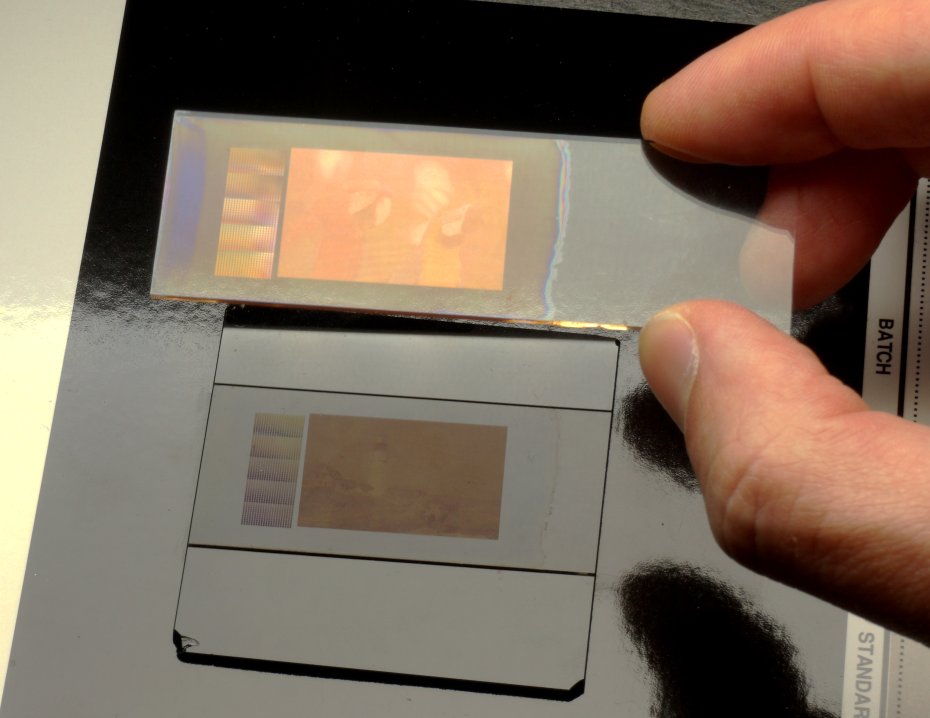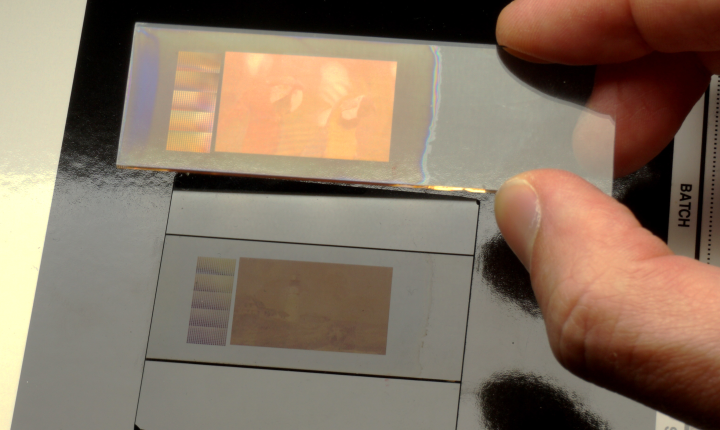Article: Anti-Counterfeiting White Light Printed Image Multiplexing by Fast Nanosecond Laser Processing
Last January, an article written by the Laboratoire Hubert Curien’s Functional Materials and Surfaces team was published in Advanced Materials, a very high impact interdisciplinary journal published by Wiley-Blackwell.
Encoding several images in a single thin layer in such a way that they could be revealed independently by altering the conditions of observation of the layer has great potential for high-end anti-counterfeiting applications. Recently, the high contrast and dichroic properties of plasmonic colours have been soundly used to develop image multiplexing. Researchers at Laboratoire Hubert Curien and HID Global CID have developed a laser processing technique that allows printing large multiplexed images at low cost, with a high flexibility, and within very short times. The laser beam tunes the statistical properties of the nanoparticle assemblies, like their size-distribution, their shape anisotropy, and their average spatial distribution through self-organization mechanisms. Yet, the laser processing reproducibly controls the macroscopic optical properties of these random plasmonic metasurfaces and interestingly creates optical properties that are not accessible by other means. The team has demonstrated two- and three-image multiplexing under non-polarized white light, making the technology useful for real applications where an authentication is expected in few seconds.
Abstract
Passive plasmonic metasurfaces enable image multiplexing by displaying different images when altering the conditions of observation. Under white light, three-image multiplexing with polarization-selective switching has been recently demonstrated using femtosecond-laser-processed random plasmonic metasurfaces. Here, the implementation of image multiplexing is extended, thanks to a colour-search algorithm, to various observation modes compatible with naked-eye observation under incoherent white light and to four-image multiplexing under polarized light. The laser-processed random plasmonic metasurfaces enabling image multiplexing exhibit
self-organized patterns that can diffract light or induce dichroism through hybridization between the localized surface plasmon resonance of metallic nanoparticles and a lattice resonance. Improved spatial resolution makes the image quality compatible with commercial use in secured documents as well as the processing time and cost thanks to the use of a nanosecond laser. This high-speed and flexible laser process, based on energy-efficient nanoparticle reshaping and self-organization, produces centimetre-scale customized tamper-proof images at low cost, which can serve as overt security features.

Two images combined in one, printed by a single laser beam in a thin layer (100 nm) of Ag:TiO2, which are revealed independently in reflection and in transmission
Illustration above:
Two images combined in one, printed by a single laser beam in a thin layer (100 nm) of Ag:TiO2, which are revealed independently in reflection and in transmission.

Illustration above:
Applications of white light printed image multiplexing: secure and personalized anti‐counterfeiting protection for manufactured goods and documents
Read the full article here (HAL open-access), or here (editor's link).
The publication was also the subject of an article in the CNRS' Innovation Letter (April 2022): https://www.cnrs.fr/cnrsinnovation-lalettre/actus.php?numero=925

